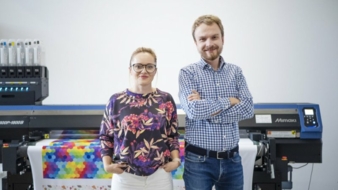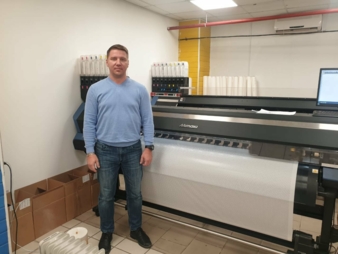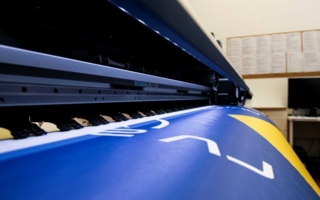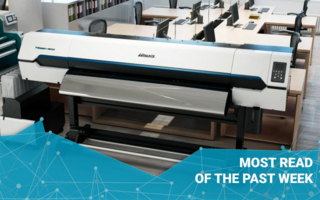10/08/2021 – The impact of Corona – An interview
Change in digital textile printing
How has the sudden and forced shift in consumer behaviour due to Covid-19 affected the wide variety of businesses within the textile printing industry?
Globally, the industry has experienced significant change in the last 12 months due to the outbreak of Covid-19. But how has this sudden and forced shift in consumer behaviour affected the wide variety of businesses within the textile printing industry?
Mimaki asked three companies about the challenges that they have experienced this year, how their digital printing production model is enabling to meet current customer requirements, and what they think the future holds for this sector.
First of all, please could you introduce yourselves and tell us about your business?
Lankov: My name is Evgeny Lankov and I am the Director of Business Line in Russia. For over 15 years, our company has specialized in the production and sale of a wide range of elegant women’s business clothing. We manage the full production cycle for our clothing, and fabric printing is an important part of our unique collections. The prints are our own designs, and they are printed onto the fabrics with our Mimaki JV300-160 printer and two Mimaki TS55-1800 printers.
Giamberini: I am Paolo Giamberini, owner and managing director of Gi.Tessil Foderami in Italy. Our company is a family-run textile company (weaving factory) that specialises in the production of “made in Italy” plain and jacquard linings and fabrics. Over the years, the company has implemented a strategy of continuous growth, focusing on product range diversification and international expansion.
We are now equipped with 28 jacquard machines and invested in our first digital printing equipment in 2019. We opted for a Mimaki TX300P-1800B, a direct-to-fabric printer equipped with pigment ink. The reason for entering the digital printing sector – which was completely new to us – was to address the increasing demand of personalisation and customisation.
Laskowski: I am Michal Laskowski, owner of CottonBee – the first digital textile print house in Poland. We like to think of ourselves as the new generation of textile printing. Everything we do is tailored to each and every customer. Users visit our website, choose a design from our catalogue or upload a file, determines the size and type of repetition, chooses the type of fabric (in our case cotton) and in a few days custom printed fabric arrives at the door ready to be sewn.
They can order a single 20cm x 20cm sample or hundreds of metres. For years we have delivered this unique business model using Mimaki printers. We started with Mimaki TX400 printers then we switched to Mimaxi TX300P printers – adding a machine with a sticky belt to our setup allowed us to venture into printing on jersey fabrics.
You all have very different and interesting companies, clearly operating very successfully year on year. Has the Covid-19 outbreak changed this? How did it affect your business?
Lankov: In my view, it would be more correct to divide the impact of the pandemic into two stages. In 2020, the situation negatively affected our business – sales dropped in our own and partner’s retail outlets and this, in turn, affected production. A significant drop in demand forced us to reduce the number of items produced in batches and to expand the range of products that we offered. Being equipped with digital printers gave us some flexibility to adapt to the change but that still presented us with challenges.
However, since the beginning of 2021, the situation in retail trade has gradually begun to improve, shopping centers have opened again, and consumer demand is steadily growing. Today we are working almost at full capacity, and this is good news.
As I said before, the flexibility offered by digital printing technologies has definitively enabled us to overcome that challenging time and is key to our growth and success.
Laskowski: Surprisingly for us, we experienced the opposite – the Covid-19 pandemic has accelerated our growth. We’ve seen significant demand for many e-commerce products aimed at DIY-ers and for our printed fabrics from customers and business partners.
The first wave of the pandemic found us at the verge of our production capacity and the demand was rapidly growing. We had to drastically extend our fulfilment time from 5 to around 40 business days. At one point our customers had to wait a month and a half for their fabrics. This, of course, presented its own challenges for the business but at least the challenges we faced were due to a positive impact on sales.
Giamberini: Our story here in Italy is, unfortunately, similar to Mr Lankov’s. Our turnover has decreased by 3 million euros in the last 12 months and, as we are also in fashion, our business has slowed down during this crisis.
Having said that, our Mimaki digital printer have opened new business opportunities during the Covid emergency: we were able to produce customized protective masks – featuring our customers’ logo or specific design. That new acquired flexibility was key to enable us to address our customers’ requirements even under exceptional circumstances.
It is evident that the different markets you print textiles for were impacted in very different ways due to the Covid-19 outbreak. Do you expect the changes you’ve seen, good or bad, to be permanent?
Lankov: It is very difficult to say for sure how long this crisis will continue and the permanency of the changes we have made. Everything will primarily depend on official decisions, but we all hope that these decisions will be considered, and that the world economy recovers quickly.
Giamberini: Yes, I agree. Hopefully, consumers will return to normal life in the near future, people will socialize and attend events, for example, and therefore, the requirements for fashion will also return to a usual level.
Laskowski: Well, as mentioned, my story is quite different to my fellow textile printers here today. We implemented a new production line last year to meet the increased demand we have experienced during the pandemic.
While we don’t hope that the change in buying behaviours negatively impacting other businesses are permanent, we are confident that the level of demand for our products will continue and this is why we made this investment. Perhaps not at the acceleration we were seeing last year, but hopefully we will see a steady increase as our business continues to grow.
Looking ahead to the future then, it is clear that digital textile printing technology is already widespread in a variety of market segments. In your opinion, what areas or applications will be most likely to grow in the near future?
Laskowski: Our focus is on direct roll-to-roll printing on natural fabrics, and we can clearly see that this segment has been growing rapidly.
Lankov: Yes, in my opinion, direct printing on natural and viscose fabrics is undoubtedly promising in the field of clothing production. Despite the widespread use of synthetics, most people still prefer natural materials as they not only have excellent hygienic qualities, but from year-to-year are becoming more fashionable and in demand.
Laskowski: Exactly. Consumers are becoming more aware every year and they also look for quality and uniqueness. This is what drives the growing demand for our custom printed textiles that our customers then use to offer great value of product and service to their customers.
Direct-to-Garment printing is another great segment of the market and the demand for such services seems to be booming. At this point in time, we do not plan to branch out, though. Focusing on our area of expertise is our main goal for now.
Giamberini: We are a textile company, with no background in printing. Having said that, I can see the potential of digital printing in our market segment too, particularly in printing apparel lining. The decision to invest in a digital textile printing system – the Mimaki TX300P-1800B – has enabled us to provide our customers with this additional service, making us a one-stop shop for everything related to the supply of lining. This is an important competitive advantage for us.
Thank you for the many interesting insights you’ve shared with us!





